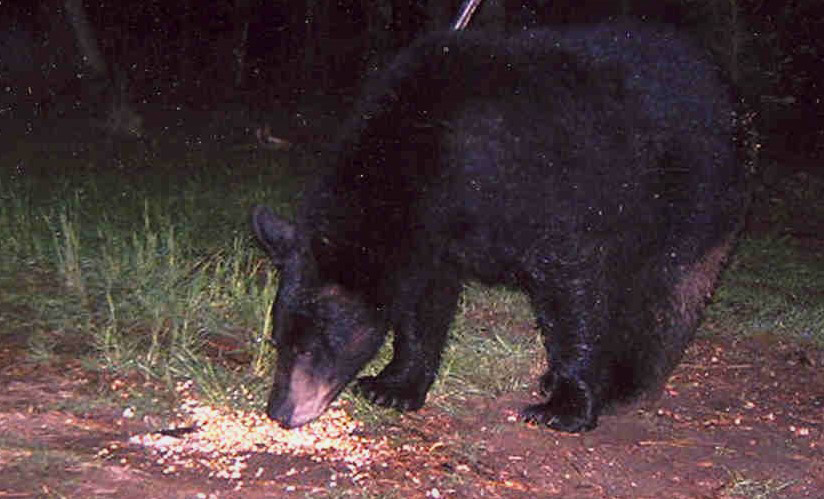by John Jefferson
The late folk singer/songwriter, Steve Fromholz, penned a whimsical ditty that extolls the charms of bears and even encourages listeners to “take a bear to lunch.”
If you live in Bowie, Titus, or Grayson counties in northeast Texas –or almost any place in the Big Bend Region and west or southwest Texas — you might not have to look one up to invite it to lunch – that bear just might come to YOU!
Bears were once thought to be extinct in Texas, but sightings in both these divergent corners of Texas located all the long way diagonally across Texas from each other scream that “they’re baack!” Two of those northeast counties border each other, but the third one, Grayson, lies several counties away. It’s possible there could be bears in several other nearby jurisdictions.
In west Texas, reports of bears sauntering into Fort Davis, Alpine, and Fort Stockton indicate a fairly wide range of territory. You might recall my hunting buddy and I found bear scat on the Big Bend Ranch State Park well over a hundred miles from Fort Stockton. It was confirmed by TPWD’s highly respected “Bear Lady,” wildlife biologist, Bonnie McKinney. My granddaughter, Laura Jefferson Heinen, also recently photographed one fairly close to her and her husband’s campsite in Big Bend National Park.
In the mid- 80s, we stopped for something cool to drink near Sabinal. Next to the restaurant was a small roadside wildlife park that had a caged bear. The custodian said they trapped it near Mountain Home in the western edge of the Hill Country. I worked in that area then but hadn’t heard of bears there. Sparsely settled, I guess it’s possible.
“There’s been a flurry of bear activity in the Trans-Pecos recently,” said Michael Janis, TPWD District Wildlife Leader. A dry spring caused movement in search of food.
“Bears and humans can co-exist,” Janis explained. “The key is preventing bears from accessing human related food sources.” That includes garbage, pet food, and corn or pellets from deer feeders. If a bear continually finds food, according to TPWD, it can lose fear of humans, leading to trouble. In Colorado, where I led photo workshops for several years, a bear regularly raided the dumpster.
TPWD suggests residents where bears have been sighted can purchase bear-proof garbage dumpsters. As the attached photo shows, deer feeders are particularly attractive to bears. Electric fencing may be a deterrent as long as it doesn’t repel deer.
Bear sightings in northeast Texas have been increasing since April, according to TPWD. They’re thought to be entering from Oklahoma, Arkansas and possibly Louisiana. Through conservation, bears in Louisiana are no longer listed as federally threatened species. Black bears are protected species in Texas, but hunters occasionally mistake them for hogs. That’s trouble.
“Bears do not generally pose a threat to livestock or humans,” TPWD biologist Penny Wilkerson says. My sister-in-law in Minnesota has had stock attacked by problem bears, however.
But whatever you do, don’t smell like food!
JJ





